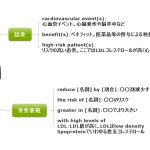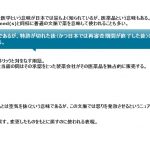
日本語版(English follows)
バイリンガル製薬業界概説について
バイリンガル製薬業界概説では、製薬業界の特有の慣習や仕組みについて、日本語で解説し、それを英語で伝える際のコツを紹介していく。
第3回の今回は極めて重要な文書である申請書、承認書、添付資料及び添付文書について採り上げ意味の違いを解説する。
英語版はネイティブスピーカーが朗読した音声付である。
申請書と承認書
申請書というと一般的には何かを申し込む際の申込書を指す。
一方製薬企業内で特に指定されない文脈で申請書というと承認申請の申請書を意味する。
以前も触れたが、製薬会社は新しい医薬品を売ろうと思ったら、製造販売承認申請を行い、PMDAの審査を受け、MHLWの承認を得る必要がある。
この申請には申請書という申込書とその補助資料である添付資料が必要になる。
この申請書類一式は国際的にある程度標準化されており、Common Technical Document(CTD)と呼ばれる。
この申請書には申請者情報、医薬品の名称、成分・分量、製造方法、用法及び用量、効能又は効果、貯蔵方法・有効期間、規格・試験方法、製造所等の情報が記載され、CTDではモジュール1を構成する。
申請書は医薬品が審査の末、承認された暁には、承認された旨の表紙を加えられて承認書という文書に名を変える。
そして、ここが非常に重要なのであるが、この申請書=承認後は承認書に記載された項目はいわゆる承認事項と呼ばれ法的拘束力を持つ。
この承認事項を変更するには原則として承認事項一部変更承認申請が必要になる。
医薬品の品質、有効性、安全性に大きく影響しない変更であれば軽微変更届で対応可能である。
このように申請書・承認書は医薬品の製造情報など会社の機密情報が含まれており、医薬品を市場に流通させる権利の根拠となることから、どの製薬企業でも非常に厳重に管理されており、製薬企業社員でも一部の社員以外は通常目にすることがない文書である。
添付文書と添付資料
承認申請には申請書と添付資料が必要であり、添付資料は一般的にCTDと呼ばれることはこれまでに述べた。
製薬企業で働いていると添付文書という言葉を聞くことがある。この2つの資料は名前が似ているのであるが全然違う別の文書である。
添付文書とは一言でいえば、医薬品の説明書である。
薬機法第52条により製造販売業者=承認を有する製薬企業が作成し医薬品に添付することが義務付けられている。
添付文書に含まれている主な項目は以下の通りである:
医薬品の名称、薬効分類、警告、禁忌、組成・性状、効能・効果、用法・用量、使用上の注意(慎重投与、重要な基本的注意、副作用、適用上の注意)、薬物動態、臨床成績、薬効薬理、有効成分に関する理化学的知見、取扱い上の注意、承認条件、包装、主要文献及び文献請求先、製造販売業者氏名、住所。
これらの記載内容のうち効能・効果及び用法・用量に関しては、上記申請書・承認書の項でも述べたように、承認事項となり、申請書・承認書の内容と一言一句一致している必要がある。
医療用医薬品の添付文書は医療従事者向けの文書であるため、一般人はあまり目にすることがないが、一般用医薬品にも同様に添付されており、こちらは一般人向けに書かれた文書であり、より一般人に分かりやすい表現や様式が用いられている。
添付文書にしたがって医薬品を使用することが適正使用のためには求められる。
添付文書、特に効能・効果、用法・用量にしたがって使用することを適応内使用、それ以外の使用を適応外使用と呼ぶ。
今回紹介したトピックについてより詳しく知りたい方はPMDAウェブサイトや医薬品製造販売指針を参照のこと。
English version(英語版)
About Bilingual Pharma Industry Topics
In this Bilingual Pharma Industry Topic series, pharma-industry specific practices or ways of doing businesses are explained in Japanese, followed by tips for conveying the same info in English.
The third topic for the series is extremely important terms, application form, approval document, attachments, and package insert; and differences between the 4 terms.
Application form and approval document
An application form usually means a form to apply for some services or processes.
On the other hand, within the pharma company in general, an application form without a specific context usually means an application form for market approval submission.
As previously touched on, if a pharma company wants to sell a new drug, a market approval submission is required, followed by a PMDA review and the MHLW's approval.
For this submission, an application form and supporting documents called attachments are required.
The format of the submission documents are standardized internationally to some extent and called the common technical document (CTD).
The application form, consisting of the module 1 of the CTD, has information about the Sponsor, drug name, ingredients and contents, manufacturing method, dosage and administration, indications, storage methods and expiration date, specifications and test methods, and manufacturing sites.
This application form, after the drug is approved, changes its name to an approval document with an attached top page including an approval statement.
Also, this is very important, but items included in the submission form or approval document are called approval matters, which are legally binding.
To change approval matters, an application for partial changes to approved matters is generally required.
If a change is so minor that it would not affect the drug's quality, effectiveness, or safety, a minor change notice is sufficient.
Application forms and approval documents thus have company confidential information and form a legal basis for the company's right to place a drug on the market.
This is why access to application forms and approval documents are very strictly controlled at any pharma companies, and only a handful of employees have the right to see these documents.
Package insert and attachments
In the previous section, we discussed that an application form and attachments are required for a market approval submission, and the attachments are generally called the CTD.
Working at pharma companies, you often hear the term package inserts. These 2 documents sound similar (in Japanese), but are completely different documents.
Package inserts are basically a user's guide of the drug.
Based on Article 52 of the PMD Act, marketing authorization holders or pharma companies with approval must prepare package inserts and attach them to drugs distributed.
Sections included in package inserts are as follows:
Drug name, therapeutic category, warnings, contraindications, description, indications, dosage and administration, precautions (careful administration, important precautions, adverse reactions, precautions concerning use), pharmacokinetics, clinical studies, pharmacology, physicochemistry, precautions for handling, approval conditions, packaging, references and request and contact info, and market authorization holder (name and address).
Of these items, indications and dosage & administration are approval matters, as previously explained, and thus must be completely consistent with descriptions in the application form and approval document.
Package inserts for ethical drugs are documents for healthcare professionals, and regular people don't often see them.
Package inserts are also attached to over the counter drugs.
In this case, the documents are specifically made for regular audiences and phrases and formats easier for lay people to understand are used.
Use of drugs following the package inserts is essential for proper use of drugs.
Drug use following the drug's package insert, especially indications and dosage & administration, is called on-label use, whereas drug use other than on-label use is called off-label use.
For those who would like to know more about the topic, please refer to the PMDA website and Drug Approval and Licensing Procedures in Japan.
解説
専門用語は赤字、製薬必修フレーズを構成する言い回し(製薬必修表現)は青字とした。
専門用語
Sponsor:申請者。薬事申請書類での申請者なので、通常製薬企業となる。英語では通常sponsor(s)が用いられるが、applicant(s)も使われる。
ingredients and contents:成分・分量。医薬品は薬理的作用を発揮する有効成分と製剤上の利便性から加えられている添加剤の賦形剤がある。それら含有成分の一覧とそれぞれの分量を成分・分量という。
manufacturing method:製造法。医薬品の製造方法。
dosage and administration:用法及び用量。医薬品をどれくらいの量、どの間隔で、どのような経路や方法で投与するかという情報。通常、臨床試験で評価された内容を申請者が提示し、規制当局が吟味して最終的に決定される。承認事項である。
indications:効能又は効果。医薬品が用いられる病態や病名であり、その医薬品の対象となる患者が記載されている。通常、臨床試験で評価された内容を申請者が提示し、規制当局が吟味して最終的に決定される。承認事項である。
storage methods and expiration date:貯蔵方法と有効期間。医薬品の特性と安定性試験結果を基に設定される。どのような条件(温度、湿度、光環境)で何年品質を保って保存できるのかの情報。承認事項である。
specifications and test methods:規格と試験方法。医薬品の特性を基に設定される。当該医薬品の品質を恒常的に確保するために適合するための基準及び試験方法の情報。承認事項である。
manufacturing sites:製造所。医薬品を製造する製造業者の名称、住所などの情報。承認事項である。
approval document:承認書。製造販売承認申請書が承認されると、承認された旨を示すカバーレターが追加される。これを承認書と呼ぶ。承認書の記載事項は承認事項と呼ぶ。
approval matters:承認事項。上記参照。
application for partial changes to approved matters:承認事項一部変更承認申請。通称「一変、一変申請」。承認事項を変更するために必要になる承認申請である。英語では外国の類似の制度を指してsupplemental NDA又はsNDAと呼ぶこともある。
minor change notice:軽微変更届。通常承認事項の変更には一変申請が必要になるが、医薬品の品質、有効性、安全性に影響を与えないような軽微な変更の場合は、この変更届で対応可能である。
Article 52 of the PMD Act:薬機法の第52条。薬機法の条の訳語には通常Articleを用いる。なお、次のレベルである第○項の訳語は通常Paragraphを用いる。
market authorization holder:製造販売業者。医薬品の世界で製造と販売、そして製造販売は厳密に区別される。製造販売は一言でいえば医薬品を市場に「上市し流通させることである」この製造販売をするためには、会社としての製造販売業の許可と製品としての製造販売承認が必要である。この製造販売業者は上記の両方の権限を持つ者という意味になる。
therapeutic category:薬効分類。医薬品を疾患領域別に区分した分類。
warnings:警告。致死的又は極めて重篤かつ非可逆な副作用が発現する場合に記載。添付文書記載項目。
contraindications:禁忌。患者の症状、原疾患、合併症、既往歴、家族歴、体質、併用薬剤等からみて投与すべきでない患者を記載。添付文書記載事項。
description:組成・性状。医薬品の有効成分と添加物の名称及び分量を承認書の記載にしたがって記載する。添付文書記載事項。
precautions:使用上の注意。患者の安全を確保し、適正使用を図るために医薬関係者に必要な情報を記載。添付文書記載事項。
careful administration:慎重投与。患者の症状、原疾患、合併症、既往歴、家族歴、体質、併用薬剤等からみて他の患者より副作用の危険性が高い場合に、注意喚起のため記載。添付文書記載事項。
important precautions:重要な基本的注意。重大な副作用や事故を防止するうえで必要である重要な注意を記載。添付文書記載事項。
adverse reactions:副作用。発現した有害な事象のうち、当該医薬品との関連性が否定できない事象。添付文書の項では、概要と重大な副作用、その他の副作用を記載。
添付文書記載事項。
precautions concerning use:適用上の注意。投与経路、剤形、注射速度、投与部位、調製方法等の注意を記載。添付文書記載事項。
clinical studies:臨床成績。臨床試験について、試験デザイン(投与量、投与期間、症例数)、有効性及び安全性の結果を記載。添付文書記載事項。英語自体は臨床試験と同じであるが、添付文書の臨床成績(臨床試験の結果を記載する)の項の訳語として用いられる。
pharmacology:薬効・薬理。承認を受けた効能・効果を裏付ける薬理作用・作用機序を記載する。添付文書記載事項。
physicochemistry:有効成分に関する理化学的知見。一般的名称、化学名、分子式、化学構造式等を記載。添付文書記載事項。
precautions for handling:取扱い上の注意。開封後の保存条件及び使用期限、使用前に品質を確認するための注意事項等「貯法及び有効期間」以外の医薬品管理に必要な事項を記載。添付文書記載事項。
approval conditions:承認条件。承認時に付与された条件を記載する。医薬品リスク管理計画や製造販売後臨床試験等。
packaging:包装。包装形態と単位を記載。添付文書記載事項。
references and request and contact info:主要文献及び文献請求先。各項目の裏付けとなる文献を記載。文献請求先住所・連絡先を記載。添付文書記載事項
ethical drugs:医療用医薬品。広い意味では一般医薬品と対となる用語。原則として医師の処方箋が必要な医薬品。処方箋医薬品というカテゴリーがあるが、一部処方箋医薬品でない医療用医薬品が存在するので、処方箋医薬品より範囲が広い。
over the counter drugs:一般用医薬品。薬局等で処方箋なしで買える医薬品。通称OTC。
proper use of drugs:医薬品の適正使用。患者にあった適切な薬剤、剤形、用量が判断されたうえで、医薬品が処方・調剤され、患者は医薬品の使い方について正しい情報を受け取る。さらに、正しい方法での医薬品の使用後に効果と副作用がフィードバックされるプロセスのこと。
on-label use:適用内使用。医薬品が承認されている効能・効果、用法・用量に基づいた使用のこと。
off-label use:適用外使用。医薬品が承認されている効能・効果、用法・用量以外での使用のこと。
用語については本サイトの用語集も適宜参照されたい。
製薬必修表現
access to:アクセス権に関するフレーズ。「○○にアクセス権」があるという意味。
are as follows:「○○は以下の通りである」と列挙する場合に便利なフレーズ。







